Here& #39;s an #AntiquityThread on the find, published today (
These ritual structures are large rectangular stone constructions that can be over 600 metres long, with a platform at each end. 2/
 https://abs.twimg.com/emoji/v2/... draggable="false" alt="📷" title="Kamera" aria-label="Emoji: Kamera">: Plans of some of the structures.
https://abs.twimg.com/emoji/v2/... draggable="false" alt="📷" title="Kamera" aria-label="Emoji: Kamera">: Plans of some of the structures.
Named ‘mustatils’, after the Arabic word for rectangle, they have long been known about but had been the subject of very little research. 3/
 https://abs.twimg.com/emoji/v2/... draggable="false" alt="📷" title="Kamera" aria-label="Emoji: Kamera">: A group of three mustatils (photograph © AAKSA and Royal Commission for AlUla).
https://abs.twimg.com/emoji/v2/... draggable="false" alt="📷" title="Kamera" aria-label="Emoji: Kamera">: A group of three mustatils (photograph © AAKSA and Royal Commission for AlUla).
As such the @aaksa_project, part of @UWAresearch
work with @RCU_SA set out to change this. 4/
 https://abs.twimg.com/emoji/v2/... draggable="false" alt="📷" title="Kamera" aria-label="Emoji: Kamera">: Actual footage of the researchers setting out.
https://abs.twimg.com/emoji/v2/... draggable="false" alt="📷" title="Kamera" aria-label="Emoji: Kamera">: Actual footage of the researchers setting out.
work with @RCU_SA set out to change this. 4/
They documented hundreds of mustatils by helicopter, explored almost 40 on the ground, and excavated one as part of the largest study of these structures ever conducted. 5/
 https://abs.twimg.com/emoji/v2/... draggable="false" alt="📷" title="Kamera" aria-label="Emoji: Kamera">: Map of the study area
https://abs.twimg.com/emoji/v2/... draggable="false" alt="📷" title="Kamera" aria-label="Emoji: Kamera">: Map of the study area
The results of this research reveal there were nearly twice as many mustatils in the region as previously thought. 6/
 https://abs.twimg.com/emoji/v2/... draggable="false" alt="📷" title="Kamera" aria-label="Emoji: Kamera">: Map of mustatil distribution in the study area
https://abs.twimg.com/emoji/v2/... draggable="false" alt="📷" title="Kamera" aria-label="Emoji: Kamera">: Map of mustatil distribution in the study area
“We documented over 1000 mustatils, covering over 200,000 km²,” said Dr Hugh Thomas, from the University of Western Australia and director of the project. 7/
The ground survey revealed that the structures were more complex than previously believed, featuring distinct entranceways, organised ‘cells’ and standing stones. 8/
 https://abs.twimg.com/emoji/v2/... draggable="false" alt="📷" title="Kamera" aria-label="Emoji: Kamera">: Some of the features of mustatils mentioned in the tweet
https://abs.twimg.com/emoji/v2/... draggable="false" alt="📷" title="Kamera" aria-label="Emoji: Kamera">: Some of the features of mustatils mentioned in the tweet
Radiocarbon dates from the excavation also revealed they date to the Neolithic, around 5300-5000 BC.
This makes them older than the pyramids of Egypt 9/
 https://abs.twimg.com/emoji/v2/... draggable="false" alt="📷" title="Kamera" aria-label="Emoji: Kamera">: Amateur hour, by Nina / CC BY 2.5
https://abs.twimg.com/emoji/v2/... draggable="false" alt="📷" title="Kamera" aria-label="Emoji: Kamera">: Amateur hour, by Nina / CC BY 2.5
This makes them older than the pyramids of Egypt 9/
“The mustatils of northwest Arabia represents the first large-scale, monumental ritual landscape anywhere in the world, predating Stonehenge by more than 2500 years,” said Dr Melissa Kennedy, assistant director of the project from the University of Western Australia. 10/
The team’s excavations also provided evidence that these structures were built for rituals, as they uncovered an apparent offering of cattle horns and skull parts. 11/
 https://abs.twimg.com/emoji/v2/... draggable="false" alt="📷" title="Kamera" aria-label="Emoji: Kamera">: Cattle horn & #39;offering& #39; (marked with arrow) in situ
https://abs.twimg.com/emoji/v2/... draggable="false" alt="📷" title="Kamera" aria-label="Emoji: Kamera">: Cattle horn & #39;offering& #39; (marked with arrow) in situ
Cattle was a vital part of the lives of the early pastoralists in the region who likely built these structures, and apparent ‘cattle cults’ have been found around 900 years later in southern Arabia. As such, this might reflect an early example of such a cult. 12/
Given the consistency in the design of the mustatils, it appears these beliefs were widespread across northwest Arabia. They also appear to have driven people to organise on a large scale. 13/
 https://abs.twimg.com/emoji/v2/... draggable="false" alt="📷" title="Kamera" aria-label="Emoji: Kamera">: Mustatils from around the study area. Note the consistency.
https://abs.twimg.com/emoji/v2/... draggable="false" alt="📷" title="Kamera" aria-label="Emoji: Kamera">: Mustatils from around the study area. Note the consistency.
“Some of these monumental structures must have been constructed by large groups of people, suggesting that communities came together to build these features,” said Dr Kennedy. 14/
The mustatils appear to be the result of shared beliefs across a wide area driving communities to come together and construct ritual sites, creating the oldest monumental landscape of this scale ever identified. 15/
“The mustatil will completely change how we view Neolithic societies in Saudi Arabia and beyond,” said Dr Thomas. 16/
If you want to find out more, the researchers did a thread diving into these magnificent mustatils  https://abs.twimg.com/emoji/v2/... draggable="false" alt="👇" title="Rückhand Zeigefinger nach unten" aria-label="Emoji: Rückhand Zeigefinger nach unten"> 17/ https://twitter.com/aaksa_project/status/1388028200463130624">https://twitter.com/aaksa_pro...
https://abs.twimg.com/emoji/v2/... draggable="false" alt="👇" title="Rückhand Zeigefinger nach unten" aria-label="Emoji: Rückhand Zeigefinger nach unten"> 17/ https://twitter.com/aaksa_project/status/1388028200463130624">https://twitter.com/aaksa_pro...
And/or you can grab their research paper  https://abs.twimg.com/emoji/v2/... draggable="false" alt="🆓" title="Quadratisches FREE" aria-label="Emoji: Quadratisches FREE">
https://abs.twimg.com/emoji/v2/... draggable="false" alt="🆓" title="Quadratisches FREE" aria-label="Emoji: Quadratisches FREE">  https://abs.twimg.com/emoji/v2/... draggable="false" alt="👇" title="Rückhand Zeigefinger nach unten" aria-label="Emoji: Rückhand Zeigefinger nach unten">
https://abs.twimg.com/emoji/v2/... draggable="false" alt="👇" title="Rückhand Zeigefinger nach unten" aria-label="Emoji: Rückhand Zeigefinger nach unten">
Thomas et al. & #39;The mustatils: cult and monumentality in Neolithic north-western Arabia& #39; https://doi.org/10.15184/aqy.2021.51">https://doi.org/10.15184/... 18/18
Thomas et al. & #39;The mustatils: cult and monumentality in Neolithic north-western Arabia& #39; https://doi.org/10.15184/aqy.2021.51">https://doi.org/10.15184/... 18/18

 Read on Twitter
Read on Twitter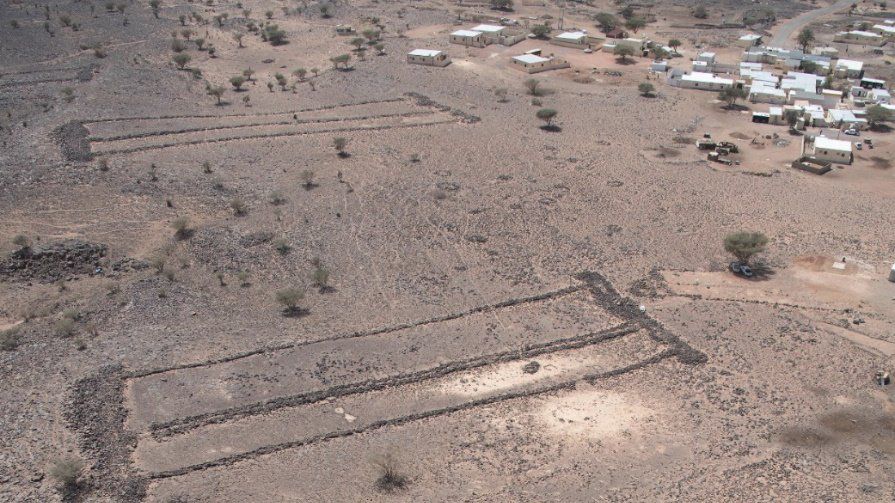 #archaeology: Hundreds of massive monuments over 7,000-years-old have been documented in NW Arabia, revealing the oldest known widespread tradition of monument building in the world.Here& #39;s an #AntiquityThread on the find, published today (https://abs.twimg.com/emoji/v2/... draggable="false" alt="🆓" title="Quadratisches FREE" aria-label="Emoji: Quadratisches FREE">) https://buff.ly/3gY5t9V&q... 1/ https://abs.twimg.com/emoji/v2/... draggable="false" alt="🧵" title="Thread" aria-label="Emoji: Thread">" title="https://abs.twimg.com/emoji/v2/... draggable="false" alt="🆕" title="Quadratisches NEW" aria-label="Emoji: Quadratisches NEW"> #archaeology: Hundreds of massive monuments over 7,000-years-old have been documented in NW Arabia, revealing the oldest known widespread tradition of monument building in the world.Here& #39;s an #AntiquityThread on the find, published today (https://abs.twimg.com/emoji/v2/... draggable="false" alt="🆓" title="Quadratisches FREE" aria-label="Emoji: Quadratisches FREE">) https://buff.ly/3gY5t9V&q... 1/ https://abs.twimg.com/emoji/v2/... draggable="false" alt="🧵" title="Thread" aria-label="Emoji: Thread">" class="img-responsive" style="max-width:100%;"/>
#archaeology: Hundreds of massive monuments over 7,000-years-old have been documented in NW Arabia, revealing the oldest known widespread tradition of monument building in the world.Here& #39;s an #AntiquityThread on the find, published today (https://abs.twimg.com/emoji/v2/... draggable="false" alt="🆓" title="Quadratisches FREE" aria-label="Emoji: Quadratisches FREE">) https://buff.ly/3gY5t9V&q... 1/ https://abs.twimg.com/emoji/v2/... draggable="false" alt="🧵" title="Thread" aria-label="Emoji: Thread">" title="https://abs.twimg.com/emoji/v2/... draggable="false" alt="🆕" title="Quadratisches NEW" aria-label="Emoji: Quadratisches NEW"> #archaeology: Hundreds of massive monuments over 7,000-years-old have been documented in NW Arabia, revealing the oldest known widespread tradition of monument building in the world.Here& #39;s an #AntiquityThread on the find, published today (https://abs.twimg.com/emoji/v2/... draggable="false" alt="🆓" title="Quadratisches FREE" aria-label="Emoji: Quadratisches FREE">) https://buff.ly/3gY5t9V&q... 1/ https://abs.twimg.com/emoji/v2/... draggable="false" alt="🧵" title="Thread" aria-label="Emoji: Thread">" class="img-responsive" style="max-width:100%;"/>
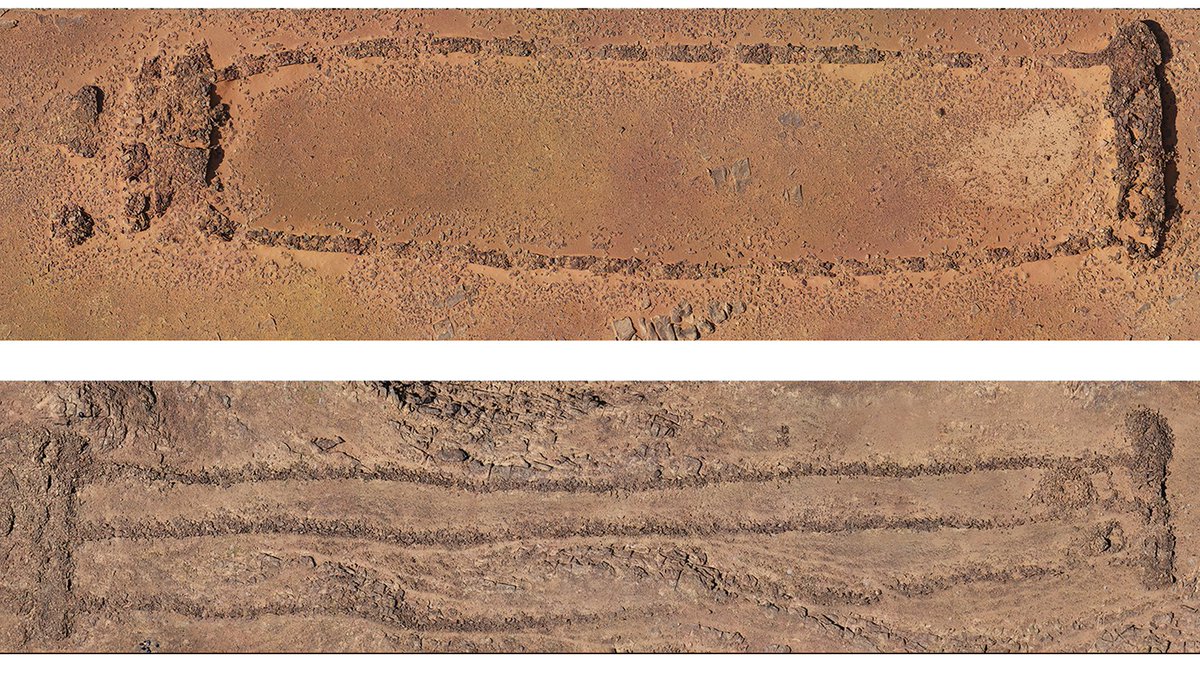 : Plans of some of the structures." title="These ritual structures are large rectangular stone constructions that can be over 600 metres long, with a platform at each end. 2/https://abs.twimg.com/emoji/v2/... draggable="false" alt="📷" title="Kamera" aria-label="Emoji: Kamera">: Plans of some of the structures." class="img-responsive" style="max-width:100%;"/>
: Plans of some of the structures." title="These ritual structures are large rectangular stone constructions that can be over 600 metres long, with a platform at each end. 2/https://abs.twimg.com/emoji/v2/... draggable="false" alt="📷" title="Kamera" aria-label="Emoji: Kamera">: Plans of some of the structures." class="img-responsive" style="max-width:100%;"/>
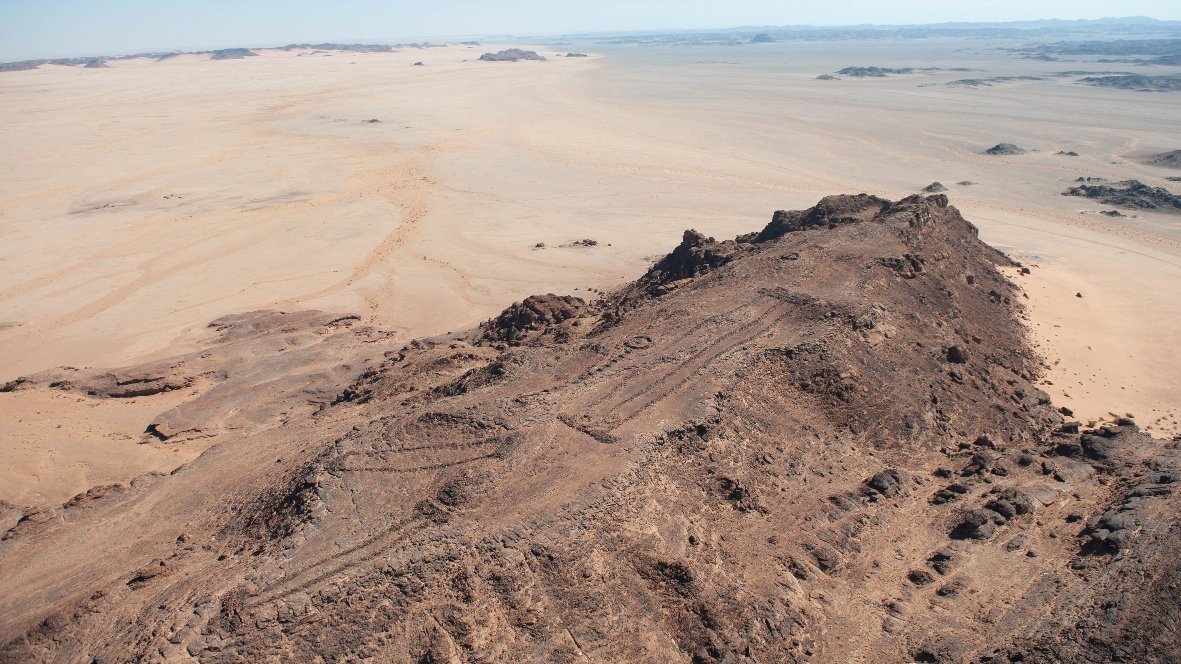 : A group of three mustatils (photograph © AAKSA and Royal Commission for AlUla)." title="Named ‘mustatils’, after the Arabic word for rectangle, they have long been known about but had been the subject of very little research. 3/https://abs.twimg.com/emoji/v2/... draggable="false" alt="📷" title="Kamera" aria-label="Emoji: Kamera">: A group of three mustatils (photograph © AAKSA and Royal Commission for AlUla)." class="img-responsive" style="max-width:100%;"/>
: A group of three mustatils (photograph © AAKSA and Royal Commission for AlUla)." title="Named ‘mustatils’, after the Arabic word for rectangle, they have long been known about but had been the subject of very little research. 3/https://abs.twimg.com/emoji/v2/... draggable="false" alt="📷" title="Kamera" aria-label="Emoji: Kamera">: A group of three mustatils (photograph © AAKSA and Royal Commission for AlUla)." class="img-responsive" style="max-width:100%;"/>
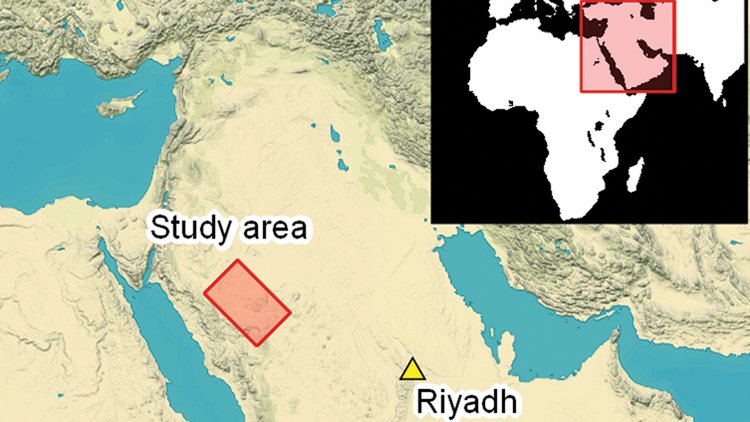 : Map of the study area" title="They documented hundreds of mustatils by helicopter, explored almost 40 on the ground, and excavated one as part of the largest study of these structures ever conducted. 5/https://abs.twimg.com/emoji/v2/... draggable="false" alt="📷" title="Kamera" aria-label="Emoji: Kamera">: Map of the study area" class="img-responsive" style="max-width:100%;"/>
: Map of the study area" title="They documented hundreds of mustatils by helicopter, explored almost 40 on the ground, and excavated one as part of the largest study of these structures ever conducted. 5/https://abs.twimg.com/emoji/v2/... draggable="false" alt="📷" title="Kamera" aria-label="Emoji: Kamera">: Map of the study area" class="img-responsive" style="max-width:100%;"/>
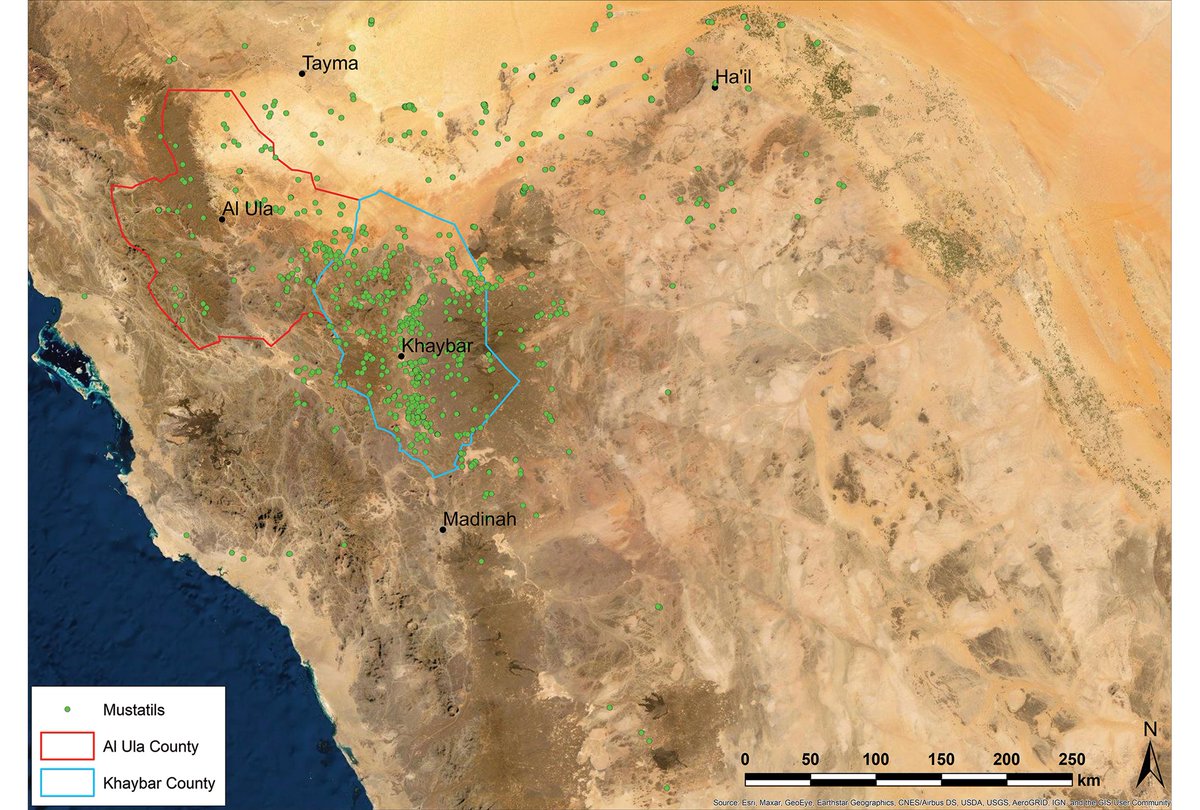 : Map of mustatil distribution in the study area" title="The results of this research reveal there were nearly twice as many mustatils in the region as previously thought. 6/https://abs.twimg.com/emoji/v2/... draggable="false" alt="📷" title="Kamera" aria-label="Emoji: Kamera">: Map of mustatil distribution in the study area" class="img-responsive" style="max-width:100%;"/>
: Map of mustatil distribution in the study area" title="The results of this research reveal there were nearly twice as many mustatils in the region as previously thought. 6/https://abs.twimg.com/emoji/v2/... draggable="false" alt="📷" title="Kamera" aria-label="Emoji: Kamera">: Map of mustatil distribution in the study area" class="img-responsive" style="max-width:100%;"/>
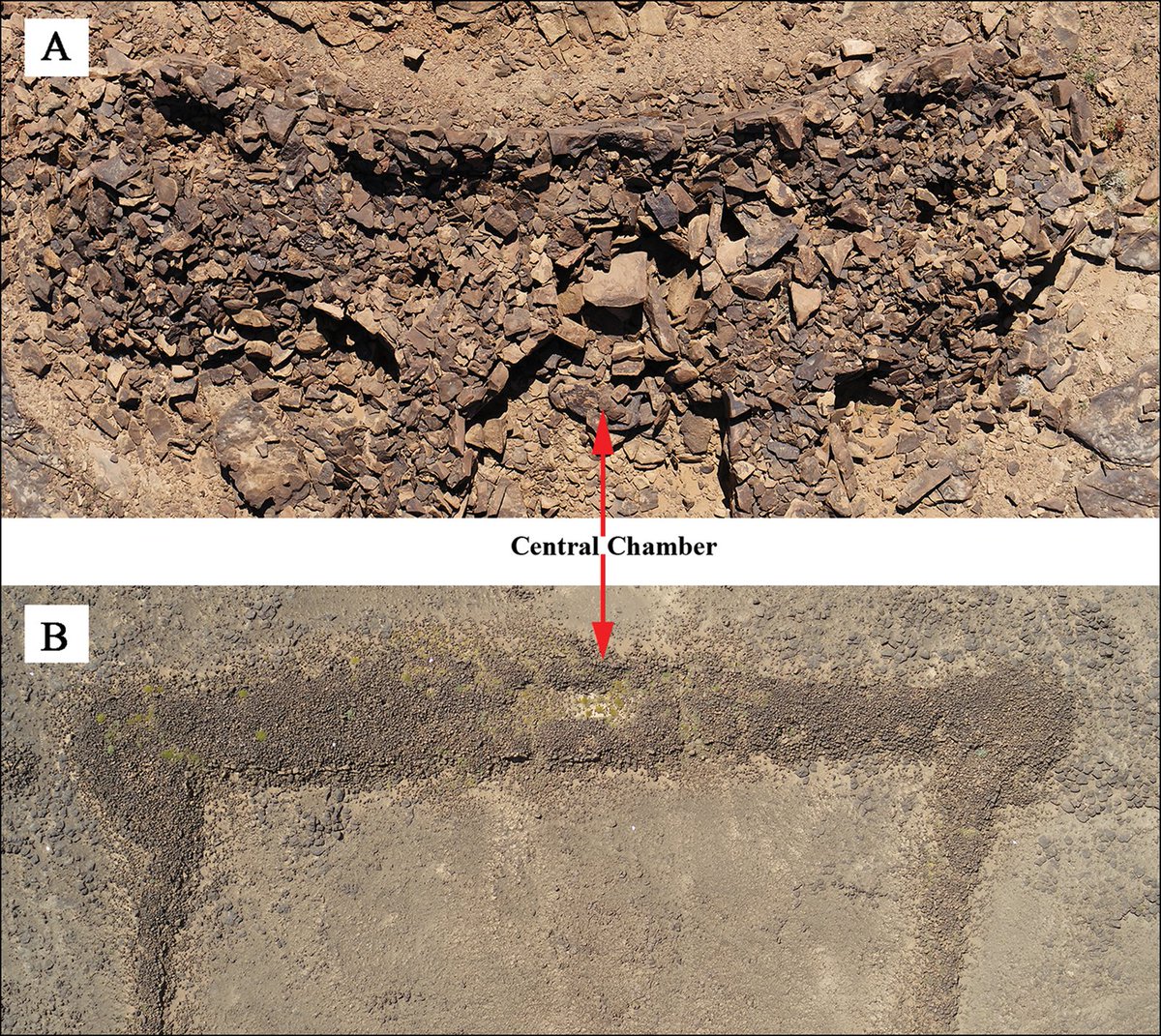 : Some of the features of mustatils mentioned in the tweet" title="The ground survey revealed that the structures were more complex than previously believed, featuring distinct entranceways, organised ‘cells’ and standing stones. 8/https://abs.twimg.com/emoji/v2/... draggable="false" alt="📷" title="Kamera" aria-label="Emoji: Kamera">: Some of the features of mustatils mentioned in the tweet">
: Some of the features of mustatils mentioned in the tweet" title="The ground survey revealed that the structures were more complex than previously believed, featuring distinct entranceways, organised ‘cells’ and standing stones. 8/https://abs.twimg.com/emoji/v2/... draggable="false" alt="📷" title="Kamera" aria-label="Emoji: Kamera">: Some of the features of mustatils mentioned in the tweet">
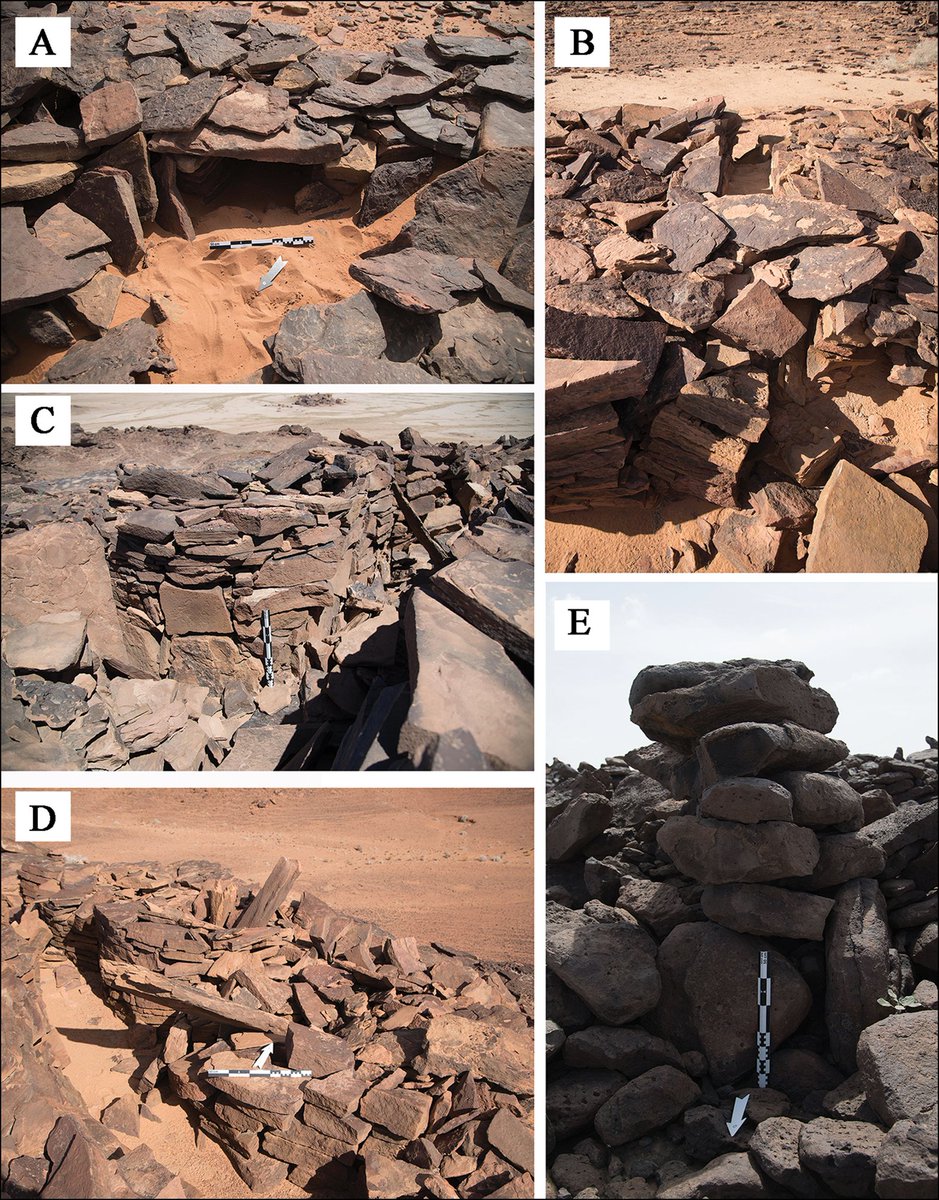 : Some of the features of mustatils mentioned in the tweet" title="The ground survey revealed that the structures were more complex than previously believed, featuring distinct entranceways, organised ‘cells’ and standing stones. 8/https://abs.twimg.com/emoji/v2/... draggable="false" alt="📷" title="Kamera" aria-label="Emoji: Kamera">: Some of the features of mustatils mentioned in the tweet">
: Some of the features of mustatils mentioned in the tweet" title="The ground survey revealed that the structures were more complex than previously believed, featuring distinct entranceways, organised ‘cells’ and standing stones. 8/https://abs.twimg.com/emoji/v2/... draggable="false" alt="📷" title="Kamera" aria-label="Emoji: Kamera">: Some of the features of mustatils mentioned in the tweet">
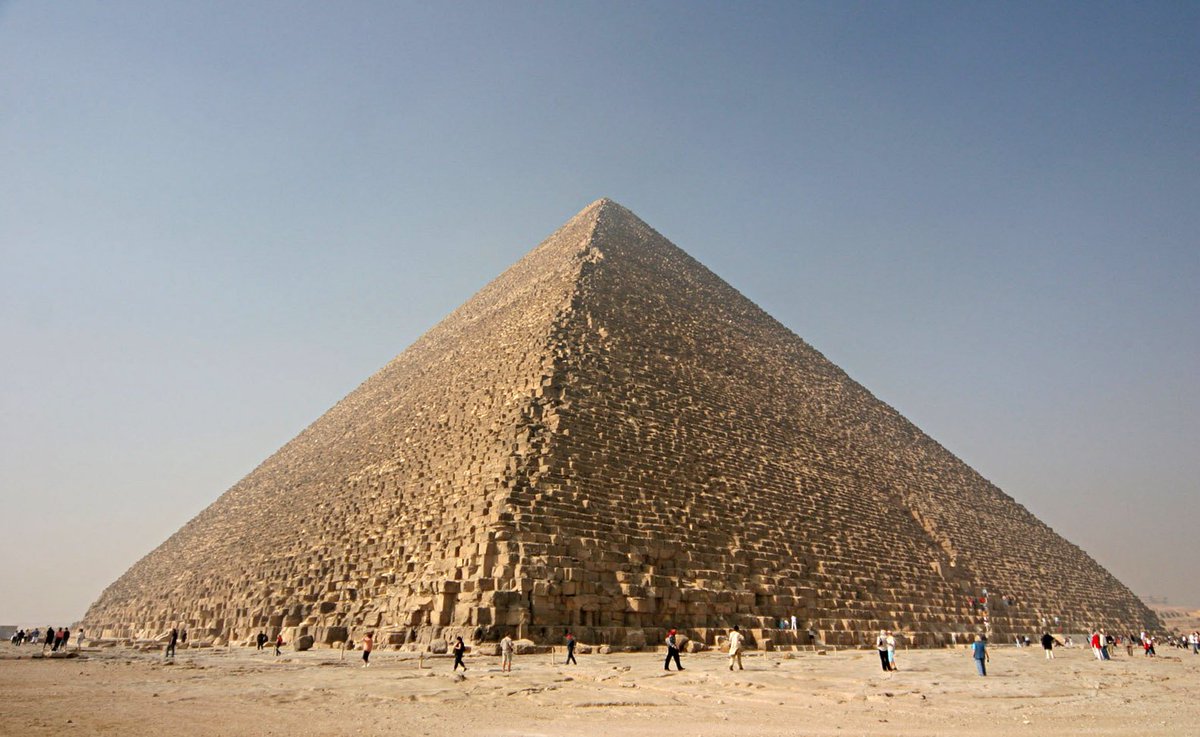 : Amateur hour, by Nina / CC BY 2.5" title="Radiocarbon dates from the excavation also revealed they date to the Neolithic, around 5300-5000 BC. This makes them older than the pyramids of Egypt 9/https://abs.twimg.com/emoji/v2/... draggable="false" alt="📷" title="Kamera" aria-label="Emoji: Kamera">: Amateur hour, by Nina / CC BY 2.5" class="img-responsive" style="max-width:100%;"/>
: Amateur hour, by Nina / CC BY 2.5" title="Radiocarbon dates from the excavation also revealed they date to the Neolithic, around 5300-5000 BC. This makes them older than the pyramids of Egypt 9/https://abs.twimg.com/emoji/v2/... draggable="false" alt="📷" title="Kamera" aria-label="Emoji: Kamera">: Amateur hour, by Nina / CC BY 2.5" class="img-responsive" style="max-width:100%;"/>
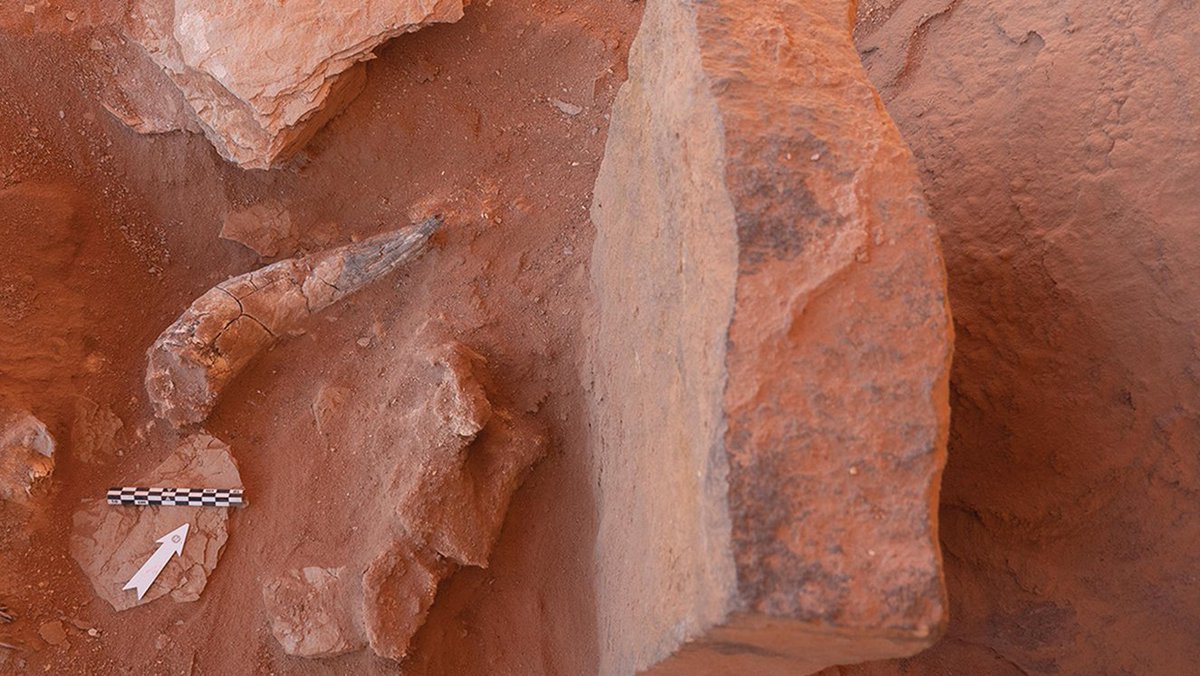 : Cattle horn & #39;offering& #39; (marked with arrow) in situ" title="The team’s excavations also provided evidence that these structures were built for rituals, as they uncovered an apparent offering of cattle horns and skull parts. 11/https://abs.twimg.com/emoji/v2/... draggable="false" alt="📷" title="Kamera" aria-label="Emoji: Kamera">: Cattle horn & #39;offering& #39; (marked with arrow) in situ" class="img-responsive" style="max-width:100%;"/>
: Cattle horn & #39;offering& #39; (marked with arrow) in situ" title="The team’s excavations also provided evidence that these structures were built for rituals, as they uncovered an apparent offering of cattle horns and skull parts. 11/https://abs.twimg.com/emoji/v2/... draggable="false" alt="📷" title="Kamera" aria-label="Emoji: Kamera">: Cattle horn & #39;offering& #39; (marked with arrow) in situ" class="img-responsive" style="max-width:100%;"/>
 : Mustatils from around the study area. Note the consistency." title="Given the consistency in the design of the mustatils, it appears these beliefs were widespread across northwest Arabia. They also appear to have driven people to organise on a large scale. 13/https://abs.twimg.com/emoji/v2/... draggable="false" alt="📷" title="Kamera" aria-label="Emoji: Kamera">: Mustatils from around the study area. Note the consistency." class="img-responsive" style="max-width:100%;"/>
: Mustatils from around the study area. Note the consistency." title="Given the consistency in the design of the mustatils, it appears these beliefs were widespread across northwest Arabia. They also appear to have driven people to organise on a large scale. 13/https://abs.twimg.com/emoji/v2/... draggable="false" alt="📷" title="Kamera" aria-label="Emoji: Kamera">: Mustatils from around the study area. Note the consistency." class="img-responsive" style="max-width:100%;"/>
 https://abs.twimg.com/emoji/v2/... draggable="false" alt="👇" title="Rückhand Zeigefinger nach unten" aria-label="Emoji: Rückhand Zeigefinger nach unten">Thomas et al. & #39;The mustatils: cult and monumentality in Neolithic north-western Arabia& #39; https://doi.org/10.15184/... 18/18" title="And/or you can grab their research paper https://abs.twimg.com/emoji/v2/... draggable="false" alt="🆓" title="Quadratisches FREE" aria-label="Emoji: Quadratisches FREE"> https://abs.twimg.com/emoji/v2/... draggable="false" alt="👇" title="Rückhand Zeigefinger nach unten" aria-label="Emoji: Rückhand Zeigefinger nach unten">Thomas et al. & #39;The mustatils: cult and monumentality in Neolithic north-western Arabia& #39; https://doi.org/10.15184/... 18/18" class="img-responsive" style="max-width:100%;"/>
https://abs.twimg.com/emoji/v2/... draggable="false" alt="👇" title="Rückhand Zeigefinger nach unten" aria-label="Emoji: Rückhand Zeigefinger nach unten">Thomas et al. & #39;The mustatils: cult and monumentality in Neolithic north-western Arabia& #39; https://doi.org/10.15184/... 18/18" title="And/or you can grab their research paper https://abs.twimg.com/emoji/v2/... draggable="false" alt="🆓" title="Quadratisches FREE" aria-label="Emoji: Quadratisches FREE"> https://abs.twimg.com/emoji/v2/... draggable="false" alt="👇" title="Rückhand Zeigefinger nach unten" aria-label="Emoji: Rückhand Zeigefinger nach unten">Thomas et al. & #39;The mustatils: cult and monumentality in Neolithic north-western Arabia& #39; https://doi.org/10.15184/... 18/18" class="img-responsive" style="max-width:100%;"/>


